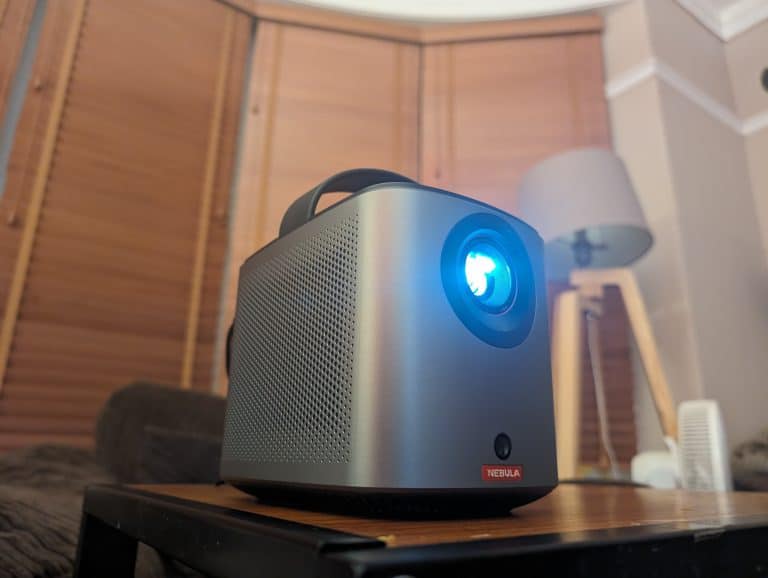Any links to online stores should be assumed to be affiliates. The company or PR agency provides all or most review samples. They have no control over my content, and I provide my honest opinion.
Portable power stations have become incredibly popular in recent years. They are versatile devices that can be used to power devices for days at a time or allow you to power high-powered appliances that require mains power without the need to be connected to the mains. They are obviously incredibly useful for things like camping or off-grid living, but they are also popular for backup power or as an uninterruptible power supply.
The size of the portable power station you need depends on the power consumption of the devices you plan to charge and the amount of time you need to use them.
A general rule of thumb is to consider the total power consumption of the devices you plan to use (measured in watts) and to add a bit of extra capacity to account for any unexpected usage or inefficiencies. You should also consider the maximum number of devices you would want to charge simultaneously.
What size portable power station is needed for laptops, phones and tablets?
For low-powered devices like laptops and phones, you won’t need a very large power station. If you want to charge a laptop (50 watts) and a phone (5 watts) at the same time for 2 hours, you will need a portable power station with at least 105 watt-hours of capacity (0.105kWh). If you want to charge a laptop (50 watts) and a phone (5 watts), and a tablet (10 watts) at the same time for 2 hours, you will need a portable power station with at least 165 watt-hours of capacity(0.105kWh).
Another thing to consider is the output ports and their amperage. If you want to charge high-power devices like laptops, you need to look for a power station with USB-C ports with a higher amperage (e.g. 60W or more).
Generally, the smallest portable power stations are around 256Wh, and you have options from EcoFlow, Anker, Jackery and ALLPOWERS. These are all perfect for anyone that wants the flexibility to power devices like laptops when travelling or even just working outside in the sunny weather. They are also handy to keep in your car for any sort of backup solution.
What size portable power station is needed for low-power small appliances?

It is the same logic as for phones and laptops. You need to understand how much electricity the appliance needs and how long you want to run it.
Once you start using the DC sockets, you will also need to consider the peak output of the power station and what the appliance will try and draw.
Things like fridges and lights all draw a relatively small amount, and most, if not all, small power stations will power these. Also, medical equipment such as CPAP machines only draws around 30-60 Watts (though please check this yourself).
If you are unsure about the power draw, you can look up the product specification or use a plug-in power meter to check the power draw. You could even use a power monitoring smart plug to see the total use over 24 hours (or the period of time you expect to need to power the device).
Monitoring long-term use is worthwhile for things like fridges because they can draw 150W or so when in use, but once the internal target temperature is reached, it will reduce power and barely use anything (relying on insulation). The compressor only kicks in again when the temperature increases too much.
Desktop PCs are a good example of variable power draw. Mine only pulls around 150W normally, but if I were to game, this could easily go over 600W.
Things like kettles or anything that needs to heat things quickly draw huge amounts of power and will often require too much power for a small power station (and many large power stations).
There are a lot of amazing options in the mid-range of portable power stations, but they are all quite expensive.
Some examples, from least expensive to more:
- The ALLPOWERS S700 is 606Wh with 1400W peak output for around £539
- The BLUETTI EB70 has 716Wh capacity and 1000W rated wattage and it just £729
- The EcoFlow DELTA 2 is 1000W with 1800W max output, and you can buy an extra battery to double the storage for £1099
- The Jackery Explorer 1000 Pro also has a 1000W capacity, and this can do 2000W peak output for £1099
What size portable power station is needed for high-powered appliances and power tools?

When it comes to high-powered devices, you are not going to be running things for a long period of time. But, more importantly, you have to think of the peak power draw.
You only need to use a kettle for a minute or so, but with many of them drawing up to 3000W, you are going to struggle to find a power station that won’t trip out on you.
A lot of people seem to ask how long a heater will, such as an oil-filled radiator, last. It is quite simple, if you have a 1000W radiator, then a 1kWh portable power station will last for an hour. That portable power station will also need to be able to supply 1000W as peak power.
Again, for higher-powered devices, I would recommend at least checking the official specification, but you’d be better off monitoring the actual usage over a period of time.
Generally, the bigger the capacity of a power station, the bigger its peak output is. You have a lot of options, and they can get very expensive.
For example, the EcoFlow DELTA Max (2000) has a 2kWh battery life and can do 2400W total output with surge protection of 5000W, but it will set you back £2K.
BLUETTI have what they call home battery backup rather than portable power stations. These are on rollers because they are that big. The EP500Pro has 5100Wh storage and can do 3000W output. This will cost you £5.7k
| Preview | Product | Rating | Price | |
|---|---|---|---|---|

| EF ECOFLOW 2016Wh Portable Power Station DELTA Max,... | Buy on Amazon | ||

| Jackery Explorer 2000 PRO, 2160WH Portable Power Station... | Buy on Amazon |
I am James, a UK-based tech enthusiast and the Editor and Owner of Mighty Gadget, which I’ve proudly run since 2007. Passionate about all things technology, my expertise spans from computers and networking to mobile, wearables, and smart home devices.
As a fitness fanatic who loves running and cycling, I also have a keen interest in fitness-related technology, and I take every opportunity to cover this niche on my blog. My diverse interests allow me to bring a unique perspective to tech blogging, merging lifestyle, fitness, and the latest tech trends.
In my academic pursuits, I earned a BSc in Information Systems Design from UCLAN, before advancing my learning with a Master’s Degree in Computing. This advanced study also included Cisco CCNA accreditation, further demonstrating my commitment to understanding and staying ahead of the technology curve.
I’m proud to share that Vuelio has consistently ranked Mighty Gadget as one of the top technology blogs in the UK. With my dedication to technology and drive to share my insights, I aim to continue providing my readers with engaging and informative content.
Last update on 2025-07-11 / Affiliate links / Images from Amazon Product Advertising API














